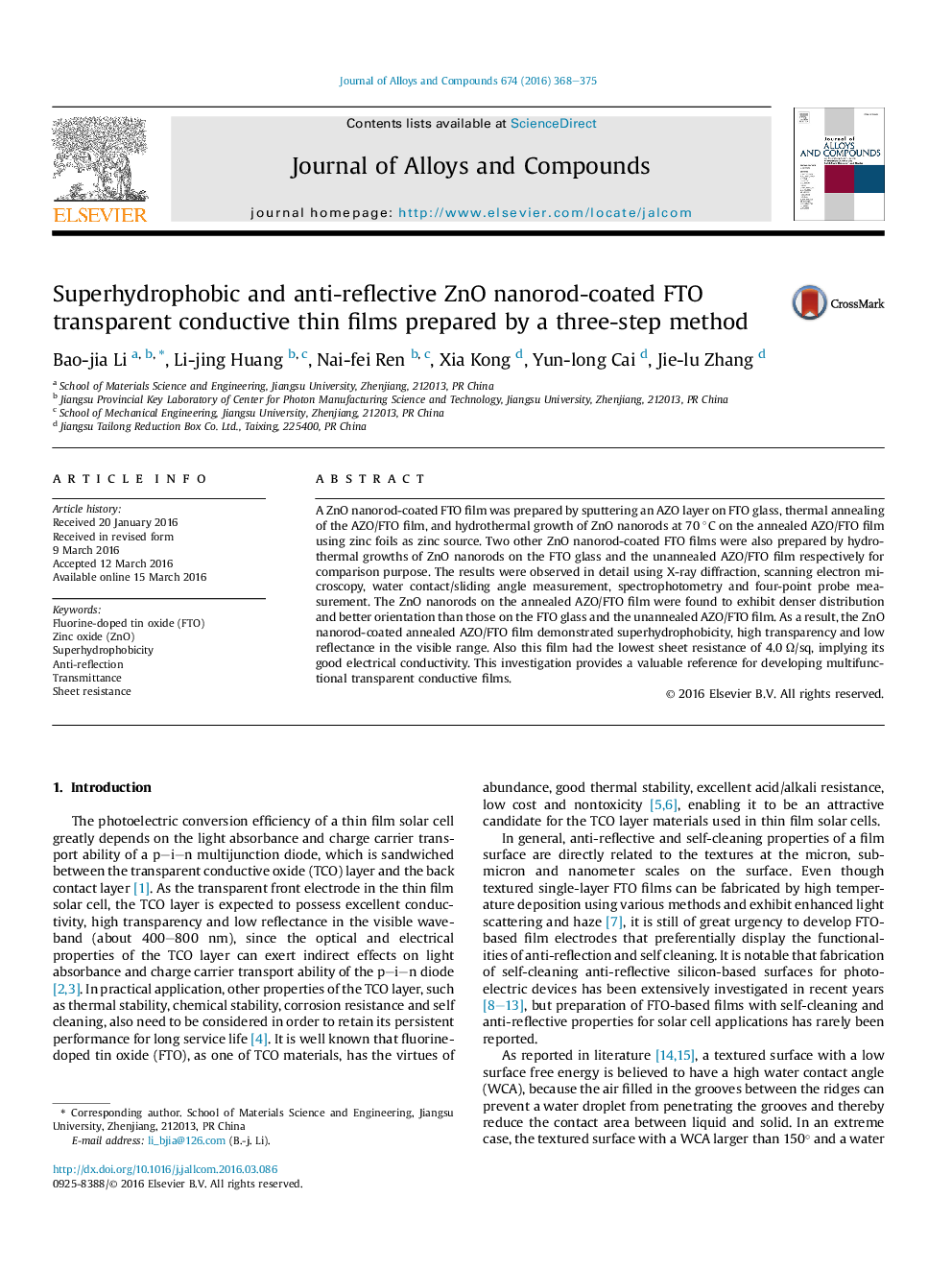| Article ID | Journal | Published Year | Pages | File Type |
|---|---|---|---|---|
| 1605973 | Journal of Alloys and Compounds | 2016 | 8 Pages |
•ZnO nanorod-coated annealed AZO/FTO film was obtained by a three-step method.•FTO and unannealed AZO/FTO films were also used as substrates for comparison.•ZnO nanorods on the annealed AZO/FTO film were denser and more vertically-oriented.•The ZnO nanorod-coated annealed AZO/FTO film (Z/TA-FTO) had superhydrophobicity.•The Z/TA-FTO exhibited high transparency, low reflectance and good conductivity.
A ZnO nanorod-coated FTO film was prepared by sputtering an AZO layer on FTO glass, thermal annealing of the AZO/FTO film, and hydrothermal growth of ZnO nanorods at 70 °C on the annealed AZO/FTO film using zinc foils as zinc source. Two other ZnO nanorod-coated FTO films were also prepared by hydrothermal growths of ZnO nanorods on the FTO glass and the unannealed AZO/FTO film respectively for comparison purpose. The results were observed in detail using X-ray diffraction, scanning electron microscopy, water contact/sliding angle measurement, spectrophotometry and four-point probe measurement. The ZnO nanorods on the annealed AZO/FTO film were found to exhibit denser distribution and better orientation than those on the FTO glass and the unannealed AZO/FTO film. As a result, the ZnO nanorod-coated annealed AZO/FTO film demonstrated superhydrophobicity, high transparency and low reflectance in the visible range. Also this film had the lowest sheet resistance of 4.0 Ω/sq, implying its good electrical conductivity. This investigation provides a valuable reference for developing multifunctional transparent conductive films.
Graphical abstractFigure optionsDownload full-size imageDownload as PowerPoint slide
